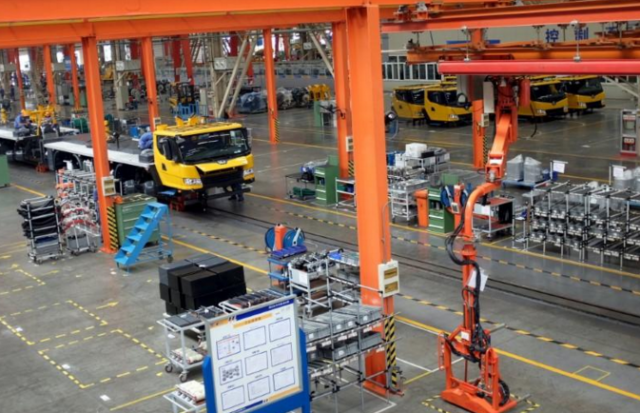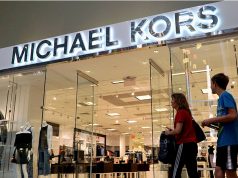BEIJING – China’s manufacturing activity grew at the fastest pace since 2012 in September as factories cranked up output to take advantage of strong demand and high prices, easing worries of a slowdown before a key political meeting next month.
Production, total new orders and output prices all improved to the highest level in at least a year, while a pick-up in a reading for the construction sector indicated a building boom is undiminished.
The official Purchasing Managers’ Index (PMI) released on Saturday rose to 52.4 in September, from 51.7 in August and well above the 50-point mark that separates growth from contraction on a monthly basis.
It marked the 14th straight month of expansion for China’s massive manufacturing industry and the highest reading since April 2012. Analysts surveyed by Reuters had forecast the reading would ease slightly.
The data comes ahead of the Communist Party Congress in mid-October, a once-every-five-years meeting where new leaders are appointed and the government’s key political and economic initiatives are laid out, though details are usually not announced until much later.
China’s economy grew by a faster-than-expected 6.9 percent in the first half of 2017, and looks set to easily meet the government’s full-year target of around 6.5 percent.
China’s manufacturers are reporting their best profits in years, fuelled by government-led infrastructure spending, a strong housing market, higher factory-gate prices and a recovery in exports.
But cost pressures from high raw materials prices and continued underperformance of smaller firms mean some manufacturers are still struggling.
“Mid- and downstream industries are worried about a further increase in cost pressures,” National Bureau of Statistics official Zhao Qinghe wrote in comments published with the data.
INPUT PRICES CLIMB
The latest survey showed input prices continued to rise at a solid clip, with the reading at 68.4 compared with 65.3 in August, benefiting upstream producers such as miners, smelters and oil refiners.
Indexes for raw materials prices in the paper, wood processing and furniture, and chemical products manufacturing industries were all above 75.0, said Zhao, indicating large price increases.
Output prices also rose but at a slower pace, pointing to lower profit margins for companies further along the supply chain who are unable to pass on all of the price increases to their customers.
Steel mills, in particular, continue to run at full tilt to cash in on fat profit margins as demand remains strong and the government has said it will order mills to curb production to reduce choking air pollution over winter.
A separate PMI on the steel industry fell to 53.7 in September from 57.2 in August but remained in solid expansion territory, according to data from the China Federation of Logistics and Purchasing.
The federation said high prices for coking coal and other raw materials, along with limits on steel production in North China, meant steel firms were reluctant to boost inventories of raw materials.
For the manufacturing sector overall, inventories of raw materials and finished goods continued to decline in September, providing little indication that factories were stocking up in preparation for winter production cuts.
Big firms saw the strongest improvement in September, with a large firms sub-index rising to 53.8, while one for small firms improved slightly but was still in contraction territory at 49.4.
The impressive performance for China’s manufacturers comes despite a government push to shutter outdated industrial capacity and clean up polluting industries, though some analysts say official claims of massive capacity cuts are misleading as overall production is still rising.
Chinese authorities are also in the midst of a campaign to reduce the risks from a rapid build-up in debt produced by years of credit-fuelled stimulus, and the continued strength of the industrial sector could give policymakers confidence to stick to the push for deleveraging.
PRIVATE SURVEY SHOWS SLOWER GROWTH
A separate private survey may temper some of the enthusiasm, as it showed growth slowed in September amid high pricing pressure and slower new order growth.
The Caixin/Markit Manufacturing Purchasing Managers’ Index (PMI) fell to 51.0 in September, compared with 51.6 in August, as new export order growth slipped.
So far, the regulatory clampdown has focused on the financial sector, particularly interbank and shadow banking activity, and the pass-through to the real economy appears to be limited.
But S&P last week downgraded China’s sovereign credit rating, saying the government’s deleveraging drive has progressed slower than expected, leading to higher economic and financial risks.
An official survey on the services sector published Saturday rose at the fastest pace since 2014, though gains in that sector were also driven by higher input prices.
A sub-reading for the construction sector rose to 61.1 in September from 58.0 in August.
The official data showed firms in both the manufacturing and services sector continued to shed workers.










